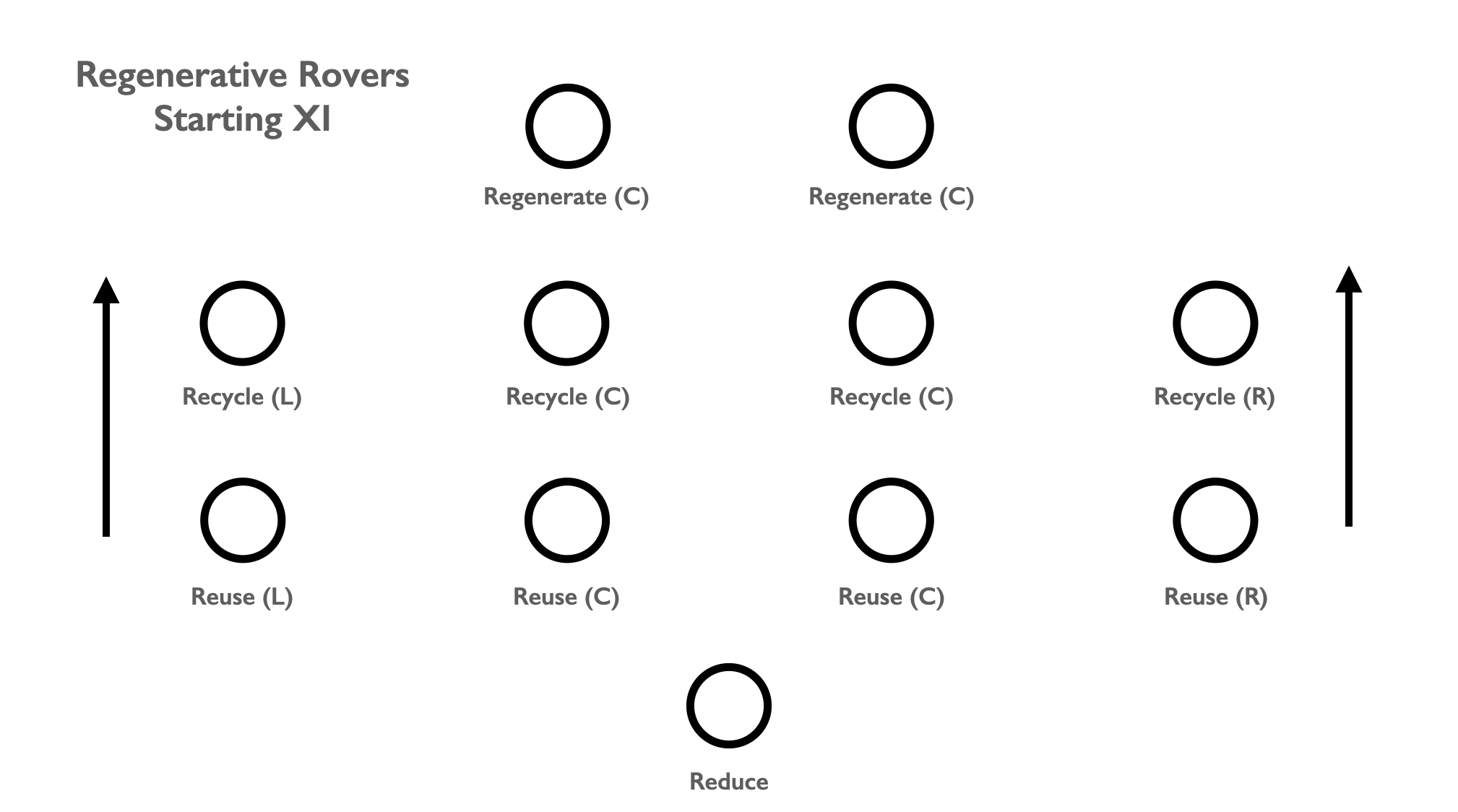Scottish Football & The Circular Economy
In 2010 Scotland had to win away against the Czech Republic to qualify for the 2012 European Championship. The Scotland manager chose to start the game with a 4-6-0 formation, i.e. with no strikers at all in the starting X1. This wasn’t vintage Barcelona playing a high press fluid system with Messi as a false 9. This was Scotland.
Unsurprisingly, Scotland lost and didn’t qualify.
I’m reminded of this Scottish version of football nihilism when I see and experience the increasingly accepted truth of the urgent need to create a circular economy. The mantra of reduce, reuse, recycle, in an effort to minimise waste and tread more lightly on the earth is laudable. It’s an important part of a bigger system, like a decent football defence. But unless we’re going to find a way around the second law of thermodynamics, it’s kind of defeatist, with our best result being not making things worse. In reality, like Scotland’s defence, we’re going to leak a goal at some stage, and our best realistic result is things going downhill just a little bit.
Wouldn’t it be better if our objective was to get on the front foot, deploy a striker or two, and look for ways to win?
From Circular to Regenerative
Regenerative approaches make things better. The most common regenerative approaches focus on making the soil more fertile and full of life, but we can extend the idea to taking waste products out of the ground and turning them into something good. If you’re one of the many who think greenhouse gases are an issue, we can use regenerative approaches to take carbon out of the atmosphere.
Unfortunately, widely accessible national policies and corporate targets seem obsessed with waste reduction and rarely touch on regenerative approaches. On the relevant Wikipedia page, the only nation referenced with something approaching a regenerative approach is the Duchy of Luxembourg. I don’t want to demean Luxembourg, but it’s going to have to regenerate pretty hard to pull the world through this situation all by itself.
The thing is, it’s not that difficult to get on the front foot if that’s our goal. And we can do it without being a super villain deploying a giant carbon sucking machine from a volcanic crater on a tropical island.
I’ll exclude the gimme of regenerative agriculture, about which I plan to harp extensively in future articles, and I’ll illustrate with a few other examples.
Regenerative Approaches, Big & Small
One client of ours uses new applications of very old mining technology to very cheaply mine nasty scrap vehicle landfill and turn it into pure commodity and precious metals. It will shortly be able to do the same with landfilled vehicle plastics. In its current roll out it will soon be able to process more than a million tons of landfill in the US alone, which to give you an idea of scale is just a little less than all of the municipal waste that’s added to Scottish landfills every year. The company does this very profitably with no subsidies and no carbon credits.
Another business employs no fancy technology at all to regenerate by simply building houses out of wood. Simply using a wooden frame instead of other materials takes about 20 tonnes of CO2 out of the atmosphere, which equates to about 7 years of car use. A very small wooden house takes about 100 tonnes of CO2 out of the atmosphere. This is again a profitable, growing business that takes no subsidies or credits.
Even at a personal level we can easily become regenerative. We could all learn to compost properly and turn those typically anaerobic, methane factories of lawn clippings and kitchen compost bins into deeper, more fertile garden soil that captures carbon. The UK alone produces 21 million tonnes of CO2 equivalent in household food waste annually, i.e. about 4% of our total greenhouse gases. With our current circular mindset we’re slowly reducing those emissions, with diminishing returns. With a regenerative mindset we can put about one and a half times that amount into our gardens (you need to add the equivalent volume of cardboard or paper to get things working aerobically), and capture a good chunk of it as better, deeper top soil.
A Regenerative Starting XI
I’m not proposing to go full Kevin Keegan, ignore defence, and say we shouldn’t bother recycling. Most of our own green tech client base is circular but not regenerative, and does outstanding and essential work with excellent, profitable business models. But we can sprinkle a regenerative striker or two, ahead of our recycling midfield, reusing defence, and reducing keeper. That way we we’d be looking forward to a healthier future without being so fearful about how lightly we tread on the earth.




